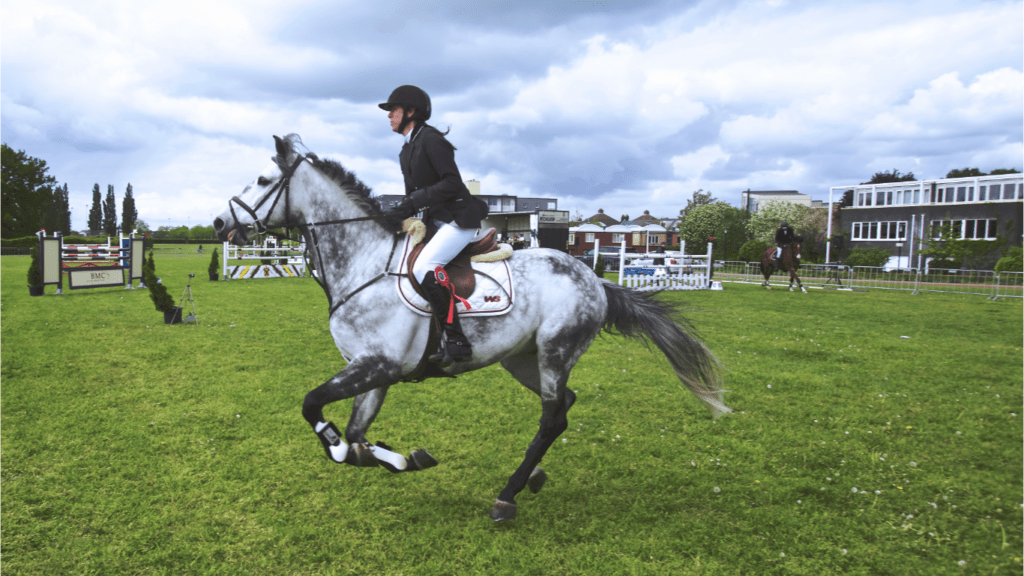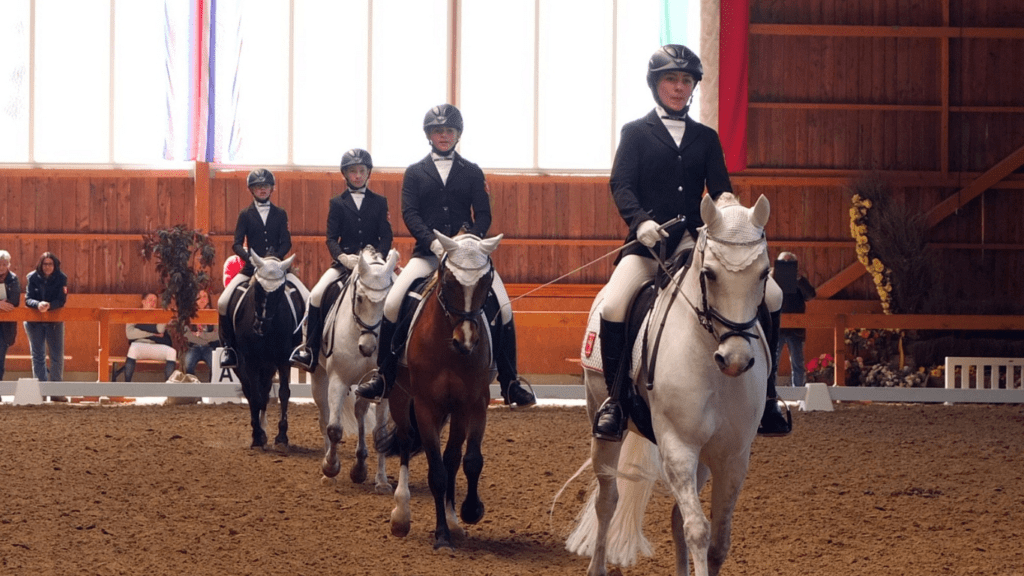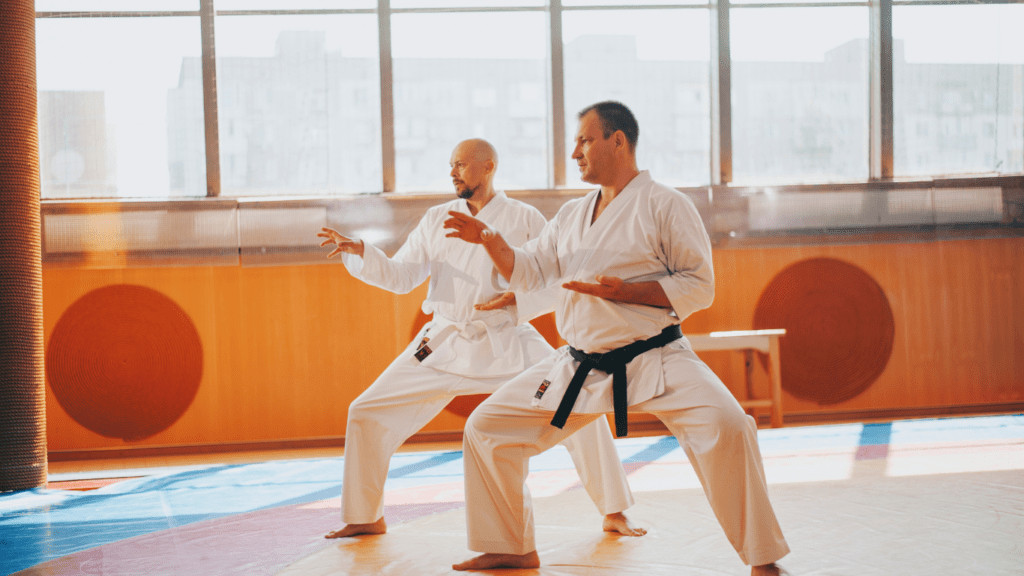Exploring the World of Equestrian Sports
Equestrian sports offer a unique blend of athleticism and artistry, highlighting the special bond between horse and rider. In this section, I’ll explore the historical aspects and societal impacts of these captivating activities.
Historical Overview of Equestrian Sports
Equestrian sports have a rich history spanning thousands of years. From ancient warfare tactics to noble competitions, horses have played pivotal roles.
In 680 B.C., chariot races became a significant event in the ancient Greek Olympic Games. By the Middle Ages, knights showcased their horseback skills in jousting tournaments.
The modern era saw the formal organization of events like:
- dressage
- show jumping
- eventing
which were included in the Olympic Games by 1912.
The Role of Horses in Human Society
Horses have profoundly influenced human society beyond the realm of sports. They were crucial in agriculture, pulling plows and carts, and in transportation before the advent of automobiles.
During wars, cavalry units depended on horses for mobility and combat superiority. In many cultures, horses symbolize freedom, strength, and nobility.
In contemporary society, equine-assisted therapies provide emotional and physical benefits, further emphasizing the lasting bond between humans and horses.
Major Disciplines in Equestrian Sports
Equestrian sports encompass a wide range of disciplines, each showcasing unique skills and attributes of both horse and rider. These major disciplines highlight the versatility and talent present in the equestrian world.
Dressage: Artistry and Precision on Horseback
Dressage represents the epitome of artistry and precision in equestrian sports. Riders perform a series of predetermined movements, called “tests,” in an arena.
The horse’s ability to execute these movements with elegance and fluidity is paramount. Judges score based on accuracy, smoothness, and the horse’s overall performance. This discipline requires immense training and harmony between the horse and rider.
Show Jumping: Skill and Strategy Over Fences
Show jumping focuses on the rider’s skill and the horse’s agility as they navigate a course of fences. Each course contains hurdles of varying heights and difficulties.
The objective is to clear all fences without knocking any down within the fastest time. Penalties incur for faults, such as knocking down a rail or refusal to jump. Show jumping is a test of speed, precision, and the horse’s athleticism.
Eventing: The Triathlon of Equestrian Sports
Eventing is often termed the triathlon of equestrian sports, combining dressage, cross-country, and show jumping. This discipline tests the rider’s and horse’s versatility and endurance.
The dressage phase evaluates precision and control, while cross-country tests stamina and ability to tackle natural obstacles. The final phase, show jumping, examines agility and accuracy over fences.
Eventing demands comprehensive skill and adaptability from both horse and rider.
These equestrian disciplines provide a glimpse into the dedication and prowess required to excel in this sport. Each discipline highlights different aspects of the unique bond between horse and rider, from perfect harmony in dressage to strategic agility in show jumping and multifaceted talent in eventing.
The Life of an Equestrian Athlete

Equestrian athletes lead demanding lives, balancing rigorous training and competition schedules with the care of their horses. Their dedication to the sport showcases both physical and mental endurance.
Training Regimens for Competitors
Equestrian training regimens involve diverse routines. Riders conduct daily sessions, alternating between flatwork, jumping, and cross-country exercises.
Flatwork enhances communication with the horse, employing dressage techniques to improve balance and responsiveness. Jumping sessions boost the horse’s agility and the rider’s precision over obstacles.
Cross-country sessions prepare athletes for the varied terrains they face in competitions.
Riders must also maintain their own fitness. Strength training, cardio workouts, and flexibility exercises are essential. Nutrition plans focusing on balanced diets sustain both energy and overall health.
Riders often collaborate with trainers, veterinarians, and nutritionists, ensuring optimal performance for both themselves and their horses.
Challenges and Rewards of Equestrian Careers
Equestrian careers come with unique challenges. Injuries, both for horse and rider, can interrupt training. Emotional bonds with horses add pressure, especially when facing medical issues or retirement decisions.
Equestrian athletes invest significant time and financial resources, with travel and competition costs mounting quickly.
The rewards of an equestrian career often outweigh these challenges. Achievements in competitions bring immense satisfaction. The bond with the horse, the pride in overcoming obstacles, and the joy of mastering complex skills drive many athletes.
Equestrian sports foster a deep connection with nature and the animal kingdom, providing experiences unmatched by other athletic pursuits.
Equipment and Gear for Equestrian Sports
Proper equipment ensures both safety and performance in equestrian sports.
Essential Gear for Horse and Rider
- Horse Tack: A saddle, bridle, and bit form the core of horse tack. Standard saddles range from dressage to jumping; each design improves the rider’s position for specific disciplines. Bridles, composed of reins and a headpiece, facilitate communication with the horse. Bits, placed in the horse’s mouth, guide its movements.
- Protective Gear: Riders must use helmets with a proper fit and approved safety standards. Body protectors safeguard against falls during eventing and cross-country. Gloves improve grip on reins, reducing hand fatigue and blisters.
- Rider Attire: Breeches, designed with reinforced seams, offer comfort and prevent chafing. Riding boots support the ankle and allow better leg contact with the horse’s sides. Show jackets and shirts, often mandatory in competitions, add a professional appearance.
- Horse Protection: Leg wraps and boots protect horses’ legs during rigorous activities. Fly masks and sheets shield horses from insects and the sun.
Innovations in Equestrian Equipment
Advanced Materials: Modern saddles often use synthetic materials for a lightweight yet durable design. Memory foam in saddle pads provides enhanced comfort.
- Wearable Technology: Smart horse boots with sensors monitor gait and detect early signs of lameness. Wearable devices track the rider’s posture, assisting in training.
- Safety Enhancements: Airbag vests deploy upon impact, offering additional protection in falls. Improved helmet designs focus on reducing rotational forces during impacts.
- Custom Fit Options: Tailored saddles ensure better distribution of weight, reducing pressure points. Custom bridles and bits optimize comfort for each horse’s unique anatomy.
High-quality equipment and ongoing innovations enhance safety and performance, vital in the demanding world of equestrian sports.
Equestrian Sports Around the World
Equestrian sports, celebrated globally, reflect diverse traditions and regional interests.
Popularity and Cultural Relevance in Different Countries
Several countries have rich equestrian traditions. The United Kingdom, home to the prestigious Royal Ascot and the Badminton Horse Trials, has ingrained equestrian culture.
In the United States, the Kentucky Derby, held annually since 1875, stands as an iconic event. Germany’s strong dressage tradition is epitomized by the CHIO Aachen festival.
Australia’s Melbourne Cup captivates the nation’s attention, while Argentina’s polo fields produce world-class players and horses.
Top Equestrian Competitions Globally
Major equestrian competitions draw international participants. The Olympics feature dressage, eventing, and show jumping. The Fédération Equestre Internationale (FEI) World Equestrian Games, held every four years, showcases multiple disciplines.
The Badminton Horse Trials and Burghley Horse Trials in the UK are premier eventing competitions. The Aachen World Equestrian Festival hosts various equestrian sports and attracts top global talent.


